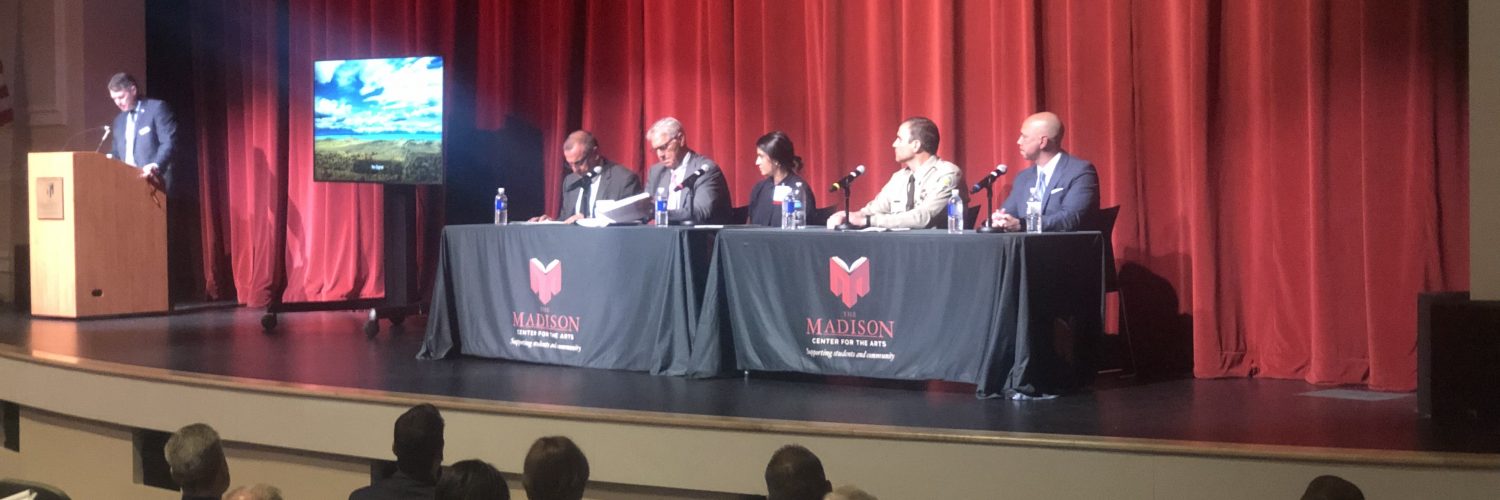“If I asked everyone in this room to place yourself in your mind where you were when 9/11 occurred, I bet everyone in this room could,” Maricopa County Sheriff Paul Penzone said to an auditorium of people during a School Safety Conference. “I know where I was, I was sitting in a bagel shop, not a donut shop, over off of Central and Virginia with a few of my colleagues. But if I asked everyone in this room where you were when the last school shooting was, I bet very few if anyone could tell us even where [it was] or what school it was.”
2018 saw the highest number of school shooting incidents in the United States since 1970 with 82 incidents, according to the Naval Postgraduate School’s Center for Homeland Defense and Security school shooting database.
According to Andre Simons, Supervisory Special Agent for the FBI’s Critical Incident Response Group, Behavioral Analysis Unit (BAU), the motives for school shooters are highly personal and often so complex only the offender can understand them, but there are usually two common threads.
“I would say the two common threads really are a desire for momentary omnipotent control, an intoxicating prospect for a person who does not feel like they’ve been given the level of attention or respect that they feel they deserve,” Simons said. “[And] then the idea that even beyond their attack, they will be memorialized, they will be remembered, they will always have their name associated with it.”
So, how can a school prepare for a shooting on campus?
Penzone and Simons were joined by former U.S. Secret Service director Mark Sullivan, former school superintendent of Newtown, CT. Dr. Joseph Erardi, Ed.D, and Nida Alvi from Everytown for Gun Safety on a panel addressing school safety.
According to Simons and Sullivan, it starts with identifying risk factors in individuals and creating a strategy around potential threats.
“This is all about risk management,” Sullivan said. “Everybody has limited resources so where do you put those resources? Who are those people that are going to be the potential attackers?”
Sullivan said the biggest challenge is not focusing on the physical aspect of a school or how to handle an insider threat but rather examining behavior and being able to prevent a child from becoming a troubled individual.
“We really need to be tuned in to how people are behaving,” Sullivan said. “See if we can find that kid who maybe isn’t the problem child but is having problems and is he going to turn into being a problem child?”
It is important to protect the children before the threat is looking them in the face, which brings schools, teachers and law enforcement together to make a safety plan.
“There are three keywords: meaningful, reasonable and sustainable,” Erardi said. “They mean different things in different places. The work you’re looking to put together… is it meaningful for the safety of children? Is it reasonable? Does it make sense for your school community and your community at large? You can build a very robust plan around those elements.”
However, protecting schools — whether with resource officers, human resources, or mental health doctors — takes money.
“There’s a cost of doing business, and we have to ask ourselves if the investment in our children is our number one priority,” Penzone said. “We will not be judged as much by our actions but [by] the things we failed to do, and this is not an area we can fail at. At the end of the day, what are we willing to do to invest, that doesn’t just mean dollars but invest our time and our priorities and our resources to restore our nation to one where our children are safe in any and all spaces?”
“When appropriate[ing] funds for school safety and security, do your absolute best to not put any restrictions around those funds because the need in each local community is so different,” Eradi said. “[After Sandy Hook], Connecticut launched millions of dollars for hardening the buildings and there were districts that needed that but there were also districts that needed that mental health piece, that HR piece.”
“These [kids] are going to be our future leaders. To me, it’s just a great sense of accomplishment to be able to make a small contribution and be a part of something bigger than myself,” Sullivan said.
The School Safety Conference was put on by the Arizona School Administrators (ASA) organization, Arizona Businesses & Education Coalition (ABEC) and Maricopa County Sheriff’s Office (MCSO).
















Add comment